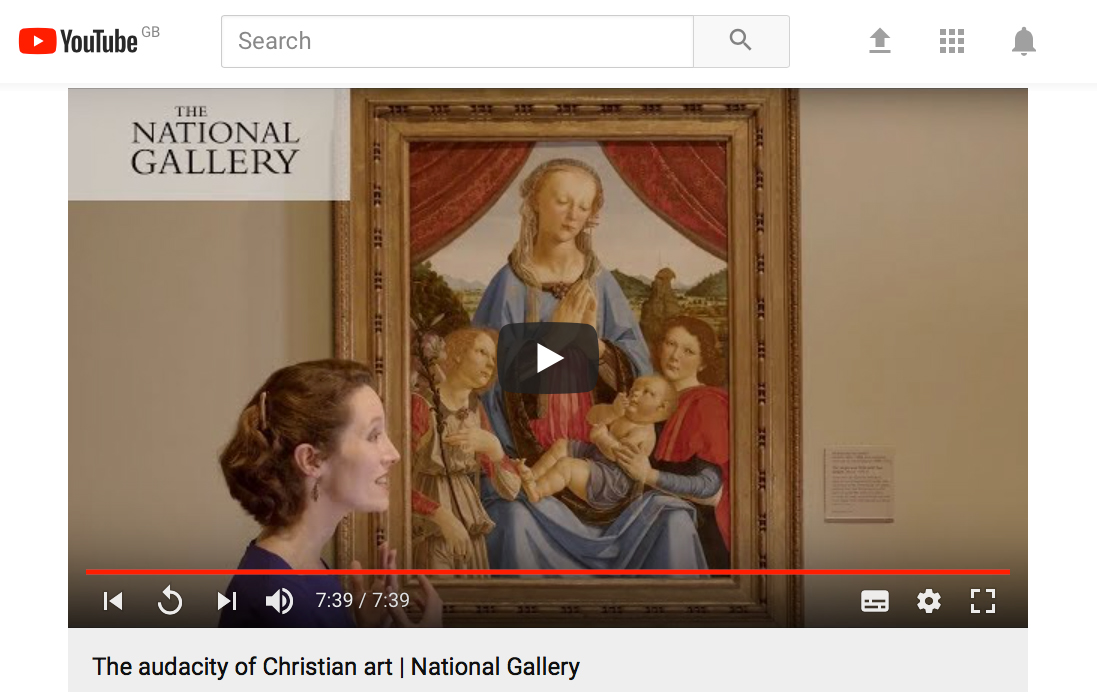So the unsettled feelings are percolating. Many and continued are the triumphalist pronouncements of church leaders that communities of faith thrive online, that connections are made and obstacles overcome (like prohibition of worship due to situations other than pandemics, eg. warfare, geography, disability), and that virtual communion is theologically sound. But some are not so sure. There’s the whiff of inflated rhetoric, a feeling that in not wanting to snuff out the humanity, some are led to overclaim for the spirituality of our technology. There’s disquiet felt by many at describing/entertaining Zoom and other digital communication as substitute presence (Giles Fraser and Paul Roberts), and not just faith leaders. I want to write here a short contribution to the debate, centred on some aspects of the technology’s materiality. In part, this is a response driven by the observation that not enough visual culture and media studies informs the discussions that readily flow into theological abstracts. In fact, I think that such abstracts miss the mark, precisely for not seeing the primary form of media exchange, the screen.
Theological discussion of the incarnation and the physical realities of Jesus and the Eucharist go some way towards an intellectual challenge. They muscle in on the conceptual space created by the overcoming of geography (with particularly purple-shirt ontological clout). You can, it turns out, throw all sorts of existential and philosophical enquiry at what simultaneity on screen might mean: you are there, but also here, and so ‘the body’ as Christ or the church can manifest itself in many different ways, literally for some, but also across the whole spectrum of metaphorical reality, including sacrament and symbol. Long, deep, and rich is the tradition of theological interpretation around images and their power – these are the verbal currents of exchange that truckload interpretation with conceptual and moral freight. Men and women coming out of vicar training colleges wield these ideas like full-blown Councils of Nicea. But such oversaturation has the effect of clipping in the digital image – you blow out the detail, creating flat areas of black or white and missing adherence to local situation. That, indeed, is the mark of a kind of category confusion: the interjection of wholesale ideas upon a two-dimensional representation. No matter how ‘transparent’ the simulation, no matter how real the figures seem, it is the medium which is the body, which offers the surrogate for presence.
Let’s step back a bit. We know how the shorthand version of this goes: the person on screen looks real, but is actually made up of varying pixel illumination (changing at speed); cameras are the primary functional operators, converting light’s energy to electrical signals. So do our eyes, for that matter. These are the answers to the ‘how’ questions, which in their place seem merely technical, an area of knowledge for practical answers. But does this understanding go deep enough? Doesn’t it, in fact, make more sense to talk ontologically and epistemologically about our relationships to objects of technology, and the extent to which they have an assumed use value in an economy of functionality – rather than a truth-bearing and revelatory value? Such is the integration of the science with our cultural worldview that where we are certainly beholden to the power of its images, we are also intellectually, and commercially, franchised to the means.
Unlike ‘using’ our eyes, we have to buy, own, and look after these technological objects in order to participate in their functionality. There is a paywall to communication here. That can, and should, deter the profundity of some of the theological claims being made: inclusion in online services requires financial means, as well as a hierarchical (if not entirely possessive) command of the instrument. We also inherently defer human agency in images of their kind, to the advanced specialist skills of a progressive society. These skills have developed through an engine of intellectual capital that has, for the last century at least, been applied to industrial and consumer need/desire. It is intellectual capital driven by the market – not by philosophical or moral enquiry for its own sake (though you might argue for a residual element of original creative enquiry).
To emphasise the point here again, we’re talking about the material technology, the carbonate stuff we hold in our hands, mount on a wall bracket, or trade in for upgrades – we’re not talking about the intellectual capital attached to the image itself (where the permissibility for connection seems almost utopian, but that’s for another blog, and other ontological-clout-contributors like Benjamin, McLuhan, and Baudrillard…). The physical objects for our most realistic images are high-precision complex pieces of electronic equipment, for which we have no personal human fingerprint or signature. Instead, we are on the receiving end of a conglomerate of impersonal human knowledge, parcelled out along long stages of production, the end of which most likely would not recognise the beginning, in whose machinations labyrinthine decisions for cost value and markup determine to a large extent the user functionality of the object. This in turn is enacted through the power we wield over the instrument as transactional, if not determinative, for human exchange.
Surely the limitations are obvious? Surely the attributions of theological efficacy are misplaced – certainly in the reductionist casting of God or Spirit in the role of Zoom share-holder? As much as Enlightenment thinking would render invisible the deeper cultural meaning of functionality (veiled as it is in the elaborate language of superior scientific description and performance), it is there. It is loaded. It is holding up whatever notions of spectacle and presence we would attribute to our screens. It drives the mining of our planet for endless supplies of lithium and cobalt. It confirms the hold of consumer identity and its ‘normative’ cultural participation over our relations with each other. Its knowledge puffs up, but ultimately does not build up, apart from as landfill. Theologians cannot afford to render it invisible, nor can they afford to align God with its mythical sub-text. Nor can they afford to pronounce from ‘outside’ their own use of the media, since the technology ownership by default includes their opt-in. Instead we need the courage to foreground our attachments, base as much as spiritual, as if the haptic were as much God-invested AND humanly-contingent as the perceptual. We need to see through our screens.
Header image: Revd Adam Beaumont leading an online Easter service for St Cyriac’s Lacock, 2020. Photograph by Sheona Beaumont.



